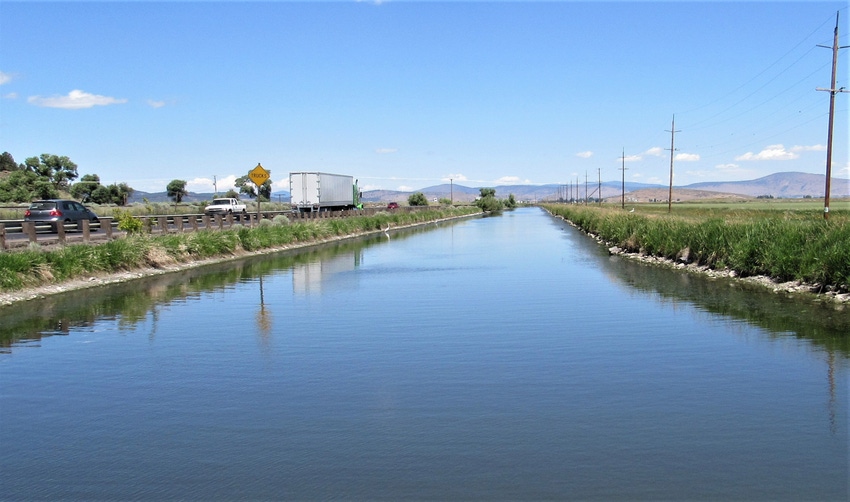November 18, 2020

Backers of a proposal to remove four dams from the Klamath River are touting a new agreement under which the states of Oregon and California would take over ownership of the facilities from PacifiCorp.
The pact follows a ruling by federal regulators this summer that the Berkshire Hathaway-owned utility could not fully transfer ownership of four hydroelectric dams in Northern California and Southern Oregon to a private entity.
PacifiCorp had planned to give the dams to the Klamath River Renewal Corp. for the purpose of removing them to improve salmon populations, but the Federal Energy Regulatory Commission approved the transfer on the condition that PacifiCorp remain a co-licensee.
The full transfer of the dams was a key element of an agreement between PacifiCorp, local tribes, environmentalists and Oregon and California regulators, utility spokesman Bob Gravely has asserted. A joint license holds PacifiCorp (and, by extension, its customers) financially liable for hiccups in the project, he told the Klamath Falls Herald and News in July.
To solve this problem, the two states agreed to take over ownership of the dams during the removal process in place of PacifiCorp. In January the groups will submit an application to FERC to officially remove PacifiCorp from the license, Oregon Public Broadcasting reports.
“Adding the states in the role assures that we have the sufficient backing to get the project done,” Chuck Bonham, director of the California Department of Fish and Wildlife, told OPB.
Removal 'closer than ever'
“The Klamath River is a centerpiece of tribal community, culture and sustenance and a national ecological treasure,” California Gov. Gavin Newsom said in a statement. “With this agreement, we are closer than ever to restoring access to 400 miles of salmon habitat which will be a boon to the local economy. I am grateful for the partnership between California and Oregon, the Yurok and Karuk Tribes and Berkshire Hathaway that proves when we work together, we can build a better, more inclusive future for all.”
Under the agreement between the states, the Yurok Tribe, the Karuk Tribe, PacifiCorp and the Klamath River Renewal Corporation (KRRC), the parties:
Jointly ask the Federal Energy Regulatory Commission (FERC) to remove PacifiCorp from the license for the project and add California, Oregon and KRRC as co-licensees for carrying out dam removal. Adding the states as co-licensees provides assurances that the project will have sufficient financial backing while honoring settlement terms that stipulate PacifiCorp would not be a co-licensee for removal.
Demonstrate their firm commitment to dam removal.
Agree to nearly double available contingency funds held by KRRC and contractors and, in the unlikely event that additional funds are needed beyond that, Oregon, California and PacifiCorp will share the costs equally to address FERC’s requirement to ensure full funding for the project.
Confirm that the KRRC will remain the dam removal entity for the project.
Plan to navigate the final regulatory approvals necessary to allow the project to begin in 2022 with dam removal in 2023. Site remediation and restoration will continue beyond 2023.
Retain the liability protections for PacifiCorp’s customers established in the KHSA.
Taken together, these provisions are intended to resolve FERC’s concerns raised in a July 2020 order and ensure a successful dam removal project, the proponents said.
“This is an incredibly important step forward on the path towards restorative justice for the people of the Klamath Basin, and towards restoring health to the river as well as everyone and everything that depends on it,” Oregon Gov. Kate Brown said. “From time immemorial, the stewardship of the indigenous peoples of the Klamath basin have nurtured the lands, waters, fish and wildlife of this region. In Oregon, the Klamath tribes remember a time when their livelihoods were supported by clean, healthy, and vibrant waters. It is that vision, that promise, that we are working towards restoring for the generations to come.”
A contentious issue
The dams' removal was the centerpiece in a set of 2010 water-sharing agreements in the Klamath Basin straddling the Oregon-California state line, but the dams' removal faced widespread opposition in Congress and in the basin. Though the dams were built for power generation and aren't used for irrigation, some growers and political leaders fear their removal will drive up energy costs and perhaps lead to reductions in water for farms.
PacifiCorp wanted to remove the dams rather than undertake the more cumbersome and expensive task of relicensing them. The utility and other dam-removal proponents sought to go through FERC after failing to win congressional approval for the nearly $450 million project by an end-of-2015 deadline.
The dams set for renewal are the Iron Gate Dam and Copco dams No. 1 and No. 2 in California's Siskiyou County and the John C. Boyle Dam near Klamath Falls, Ore.
“We are deeply grateful to the parties who negotiated a path forward for this epic project to restore the Klamath River,” KRRC Chief Executive Officer Mark Bransom said. “As has been the case numerous times in the past, the signatories to the KHSA have tackled obstacles head on and found creative solutions to daunting problems. But we particularly recognize the personal involvement of Governor Newsom, Governor Brown and Berkshire Hathaway leadership who stepped in to ensure that dam removal proceeds. Once all the necessary approvals are obtained it will be full speed ahead in removing the Klamath dams and allowing salmon to access habitat that has been cut off for a century.”
About the Author(s)
You May Also Like




